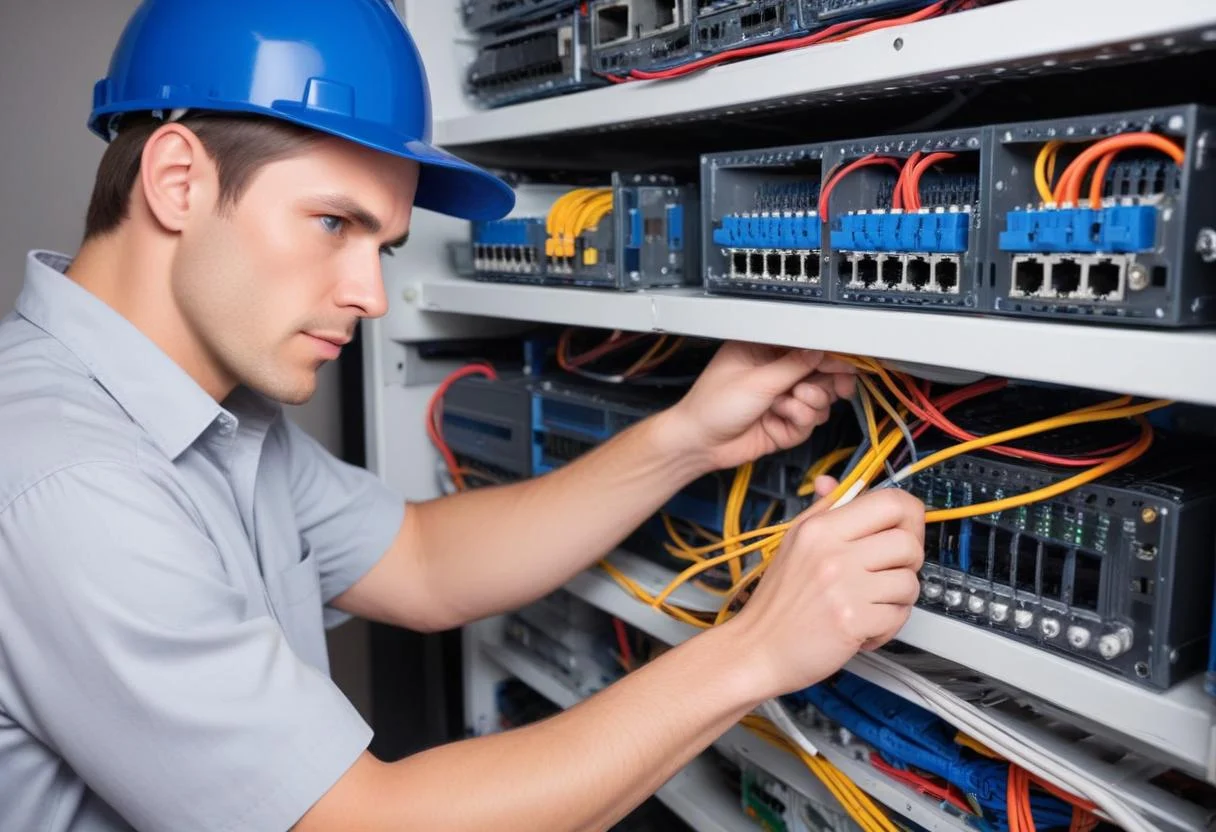Network Cable Installation Basics: What to Expect From Your Cable Installer
In today's digitally driven world, a reliable network infrastructure is vital for the smooth operation of both home and business environments.
Created by: Daniel Ogunsemowo /
Vetted by:
Otse Amorighoye

In today's digitally driven world, a reliable network infrastructure is vital for the smooth operation of both home and business environments. Network cable installation is a critical component of this infrastructure. Understanding the basics of network cable installation and what to expect from your cable installer can ensure that your networking system is efficient, reliable, and ready to handle future technological advancements. Network cable installation involves setting up the physical infrastructure necessary for data transmission in networking environments. This includes the installation of cables like Ethernet cables (Cat5e, Cat6, Cat6a, etc.), fiber optic cables, and other related hardware like racks, sockets, and patch panels. For more details on the types of cables, refer to this comprehensive guide on understanding the different types of data network cables. These are standard cables used for most networking environments, suitable for speeds up to 10 Gbps. Used for high-speed data transmission over long distances, fiber optic cables are essential for extensive networks like those in large office buildings or campuses. Learn more about the advantages of using fiber optic cabling for a network. Although less common in modern installations, coaxial cables are still used in some broadband connections. Professional installers use a variety of tools to ensure that cable installation is done efficiently and effectively. Some essential tools include: Cable testers Wire strippers Crimping tools Punch down tools Cable pathway support (trays and ladders) When you hire a professional cable installer, there are several stages in the installation process, each critical to ensuring a high-performing network. Your installer should begin with a thorough consultation to understand your networking needs. This phase involves discussing the type of network, the appropriate cables, the scale of the installation, and specific requirements like data speed and connectivity needs. The installer will also conduct a site survey to identify the best paths for cable runs and any potential challenges. For more information, check out this guide on network cable installation basics. Installers will route cables through walls, ceilings, and floors, using conduits or cable trays as needed. Cables are cut to length and connected to their respective interface points, such as computer rooms, network cabinets, or individual outlets. After the cables are laid and terminated, each connection is tested to ensure it meets industry standards and is performing optimally. A professional installer will ensure that the workspace is cleaned up after the installation and provide you with detailed documentation of the network setup. This documentation often includes network diagrams, the types of cables used, and their pathways, which can be invaluable for future maintenance or upgrades. Professional cable installers will ensure that the installation complies with national and international standards, such as ANSI/TIA/EIA standards, ensuring your network's reliability and performance. They should also provide certification testing results for the installed network. Selecting the right professional for your network cable installation is crucial. Here are some tips: Ensure the installer has the necessary certifications and experience. Look for reviews or testimonials from previous clients. You can find more about choosing the right technician in this guide. Get multiple quotes to ensure competitive pricing but beware of quotes that seem too low, as they may indicate low-quality work. A well-planned and professionally executed network cable installation is foundational to the performance and reliability of your network. By understanding what to expect from your cable installer and ensuring they follow best practices, you can achieve a network infrastructure that supports current technology needs while being prepared for future advancements. Remember, the quality of installation impacts not only the performance but also the scalability and maintenance of your network infrastructure. Choose wisely and plan thoroughly to keep your digital environment robust and ready for anything. Cat5e cables support up to 1 Gbps speed, Cat6 cables support up to 10 Gbps over shorter distances, and Cat6a cables are designed for 10 Gbps speeds over longer distances, reducing crosstalk and providing better performance. Fiber optic cables use light to transmit data, which allows for higher speeds and longer distances without signal degradation compared to traditional copper cables. For more details, refer tothis guide. Network cables should be tested during installation and periodically afterward, especially if there are changes in network performance or after significant physical disruptions like construction. Look for certifications like BICSI, RCDD, and manufacturer-specific certifications, ensuring the installer has the knowledge and skills to meet industry standards. More about this can be foundhere. While DIY installation is possible for small, simple networks, professional installation is recommended for larger, more complex systems to ensure optimal performance and compliance with standards.Introduction to Network Cable Installation
Understanding Network Cable Installation
Types of Network Cables
Ethernet Cables (Cat5e, Cat6, Cat6a, Cat7)
Fiber Optic Cables
Coaxial Cables
Tools and Equipment for Network Cable Installation
What to Expect From Your Cable Installer
Initial Consultation and Planning
Installation
Running the Cables
Termination
Testing
Cleanup and Documentation
Compliance and Certification
Choosing the Right Installer
Check Credentials
Read Reviews
Compare Quotes
Conclusion
FAQs
1. What is the difference between Cat5e, Cat6, and Cat6a cables?
2. Why is fiber optic cable used for long-distance data transmission?
3. How often should network cables be tested?
4. What certifications should I look for in a network cable installer?
5. Can I install network cables myself?
Further Reading